April 3, 2024
Ray Charles: A Black Transition
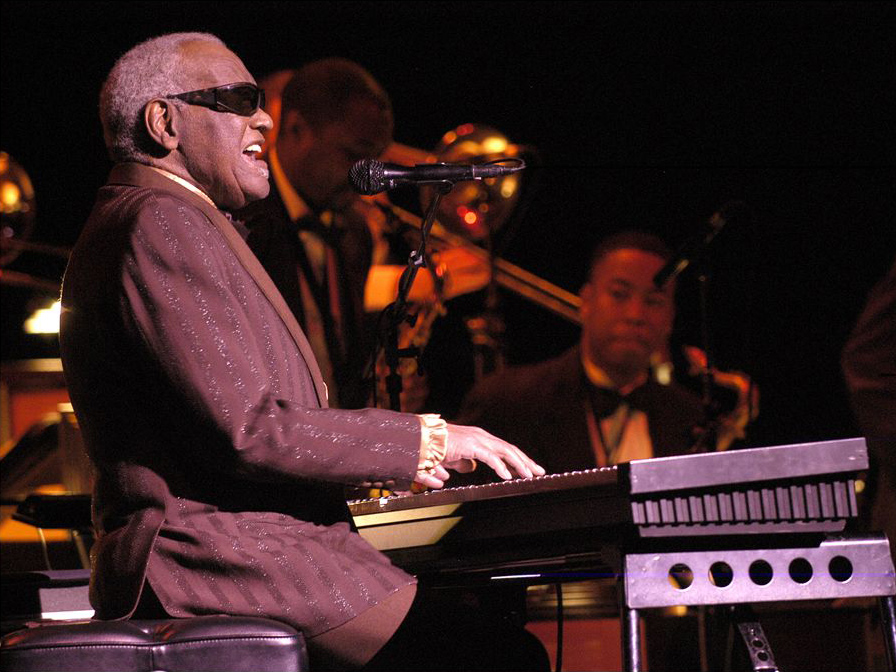
In 1966, Ray Charles departed from rehab to find a new freedom from one of his many oppressions. Under rehabilitation detention, Ray developed his sound under his own recording label by partnering with ABC. Ray was vulnerable to his audience and his managers, as the rehab had revealed the weak side of Ray Charles. Ray’s mother had always expressed to Ray that he should never become a cripple, even when Ray had gone blind at the age of seven. He pushed forward until he began shooting heroin. And with his drug bust in 1964, he began to consider how he was living his life. He sought independence and that fueled his ambition. He had made a promise to his mother to not become a cripple, and his path to independence he found in his music. Ray’s goal was to establish independence from those who manipulated his vulnerability and to be a voice for the voiceless. Ray found the time to dedicate his livelihood to organizations such as the NASCC, being honorary chairman on their board, as well as donating to the Florida School for the Deaf and Blind where Ray once attended himself. Ray Charles laid under the boot of his managers and his drug problem for so long, and yet he cemented his place in history by overcoming the music industry’s systemic manipulation on his own.
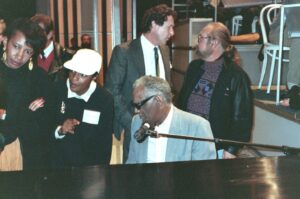
Ray was coming back from an international show in 1964. When he arrived at Boston Airport, he and his plane were investigated by federal agents who suspected him of drug trafficking. When Ray got off the plane, he knew they might as well have slapped the cuffs on him then and there. Ray knew how much dope was on the plane but still allowed the authorities to search it. The previous year on the road had been so good to Ray and the band. He knew a bump in the road like this could derail his movement in the United States. The biggest issue was that Ray had been using heroin at this point for over ten years. The height of his addiction was becoming apparent to those close to Ray and to those who listened to him. Ray subsequently recounted the event: “After all, I was the cat who went back to the plane. I was the addict.”1 The problem was never Ray using the drugs or even the person who provided Ray with the drugs. The problem was the oppressive nature of his dependency on heroin and the effect it had on his music, and Ray knew both aspects were not compatible with making him successful.
In his year of silence, 1965, Ray recognized that this disease of heroin addiction was taking over his life. Ray recounts one moment in which his son Ray Jr. was to be recognized at a baseball banquet. The entire school year, Ray Jr. had expressed to his distant father how important it would be for him that his father, the “Genius,” show up to acknowledge him. Ray could not fulfill his promise of being present when Ray Jr. received the award. It seemed as if Ray Charles had greater ambitions in mind. During this time, 1965, ABC was adamant about meeting with Ray and had been working around Ray’s schedule, but as luck had it, the banquet was changed to its alternative date, which was at the same time as Ray’s next recording session. Tension grew in the air as the time ticked down, and finally, when the clock struck eight, Ray was forced to choose between his son and his music. The music won. Ray stated, “Everyone saw that I was splitting before my boy was recognized.”2 Ray finally decided, in August of 1965, that he would start rolling clean. Ray recounts: “Sometime around August I checked into St. Francis Hospital in Lynwood, right outside of LA.”3 Nonetheless, Ray did not stop recording music. While in St. Francis, he retreated to his humble publishing record label Tangerine Records. It was apparent that this fusion with ABC and Tangerine was a major step-up for Ray after being broken and wanting to get back on the wheel. When interviewing Ray Charles, historian Michael Lydon stated, “Anyone who wanted to use Tangerine songs would have to deal with him personally.”4
It was now time for Ray to get back on the road. The real challenge was ahead of Ray now. The media had bashed his name after being busted and labeled him as a drug addict. Ray did what he knew best and assembled an amazing band that he worked very closely with. Manager Joe Adams took more of a stewardship role under Ray Charles, as he kept the band in order but listened to Ray Charles. That was the difference with Ray Charles. When he had a band, it was his band because it was his music. When Ray returned in 1966, Ray’s long-time manager, Joe Adams, encouraged Ray’s ambition to tour again. And Ray was prepared to make a statement with his music, and that during a controversial time in United States history. Ray released “Crying Time” in 1966, which was a song he worked on during his time at St. Francis. The song was about a person being left in the wind by another, and the tears from his eyes inevitably falling down. Maybe this was prophetic to Ray’s future and while the song did well, the following years would not see a prospering Ray Charles. “Crying Time” was a soulful rendition of a previously recorded country song by Buck Owens. Ray was not only bringing it back to basics, but he understood that his sound was becoming middle of the road. ABC was seeing that the numbers Ray Charles was pulling on vinyl were dropping, but the numbers at his performances remained the same in large auditoriums. Ray took his talents abroad as the war in Vietnam raged on, the white-on-black crime in the United States was at its highest, and the United States needed hope. As Ray recounts, he could never understand the conflict that the United States plunged itself into. The problems in the United States seemed to translate in Vietnam with starving children, sending young men to die in a pointless international war, and fighting an internal civil rights war. Ray just simply needed to get out of the States. When talking about the Vietnam War, Ray Charles stated, “I never did understand that war.”5 When speaking of the conflict that the United States was in, Ray points out that many of the first-line soldiers were minorities. This was after commenting on the conflicting ideologies of Malcolm X and Martin Luther King, Jr. Overall, these barriers never stopped Ray from being relevant on the music scene. As mentioned previously, Ray had his mind set on an extended tour of Europe and Asia. The planning of the tour dates was, as Ray stated: “The ‘67 tour kicked off with a benefit aboard the aircraft carrier Constellation, docked in San Diego Harbor and bound for Vietnam.”6 The overseas presence did not halt Ray’s popularity in the States, as during this time, he also released covers of pop songs, such as “Eleanor Rigby” and “Yesterday.” Ray liked the sound of The Beatles but did not like how they played their music. In Ray’s mind, since he was unable to see, music acted as his “lost” sense, which had been honed and practiced relentlessly. Ray connected with music deeper than anything, and he liked a couple of Beatles songs, even enough to cover them. In an interview, Ray Charles stated, “I have liked some of their [The Beatles] tunes, and years later I recorded four or five of them.”7
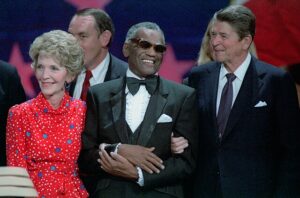
This revitalization in his career was apparent when “Yesterday” came out in October and climbed to #25 on America’s Top-100. The product during this period that Ray put out is labeled “middle of the road” because of the conflicting social views taking place within the country as well as Ray’s personal detachment from the public scene while touring in Europe. This still did not hold Ray Charles down. The final albums to be released under Tangerine Records and ABC were clear indications that both sides of the contract had different ideas for Ray’s sound. In 1967, Ray Invites You to Listen exudes a bleeding heart, aching for justice after Ray came back from his year off from touring and his year away in Europe. When away in Europe, it was as if a new life had shocked Ray’s career. The previous issues with his drug problem were far in the past and his only concern was making his music, speaking his mind, and sharing his soul. The rehab had worked and made Ray realize that he had been a cripple to society and now he would have to work more than twice as hard as anybody else. People around Ray recounted after he got out of rehab, that he had “more to do than he had time for.”8 The album represented Ray’s willingness to open up about his recent activities. This vulnerability allowed him to make himself powerful and independent of his disease, and to neglect the vile words of his audience. This was yet another victory Ray could claim as he got over heroin. In 1972, Ray released his final album under Tangerine Records labeled A Message from the People, in which Ray commented on the rising political conflicts happening in the world as he fused his own opinions on subjects like the Vietnam War and the murder of Dr. King. In a Review of Ray’s second album under Tangerine, critics recounted, “Ray’s message is well worth listening to, incisive and heartfelt, and he speaks in the eloquent American musical language.“9 The album overall was a lower-selling album but showed the public that Ray Charles was not a man who would sit back and watch as his country eats itself from the inside out. Ray’s decision to make this album nudged ABC-Paramount in the direction of putting their foot down and influencing Ray’s sound.
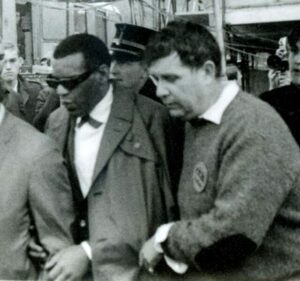
In the months leading up to October of 1972, Ray Charles had issues with producers from ABC pushing Ray to come out with a new hit song. Ray would never sit and be someone’s entertainment if he did not enjoy it. It was not his style. In October 1972, a party was held in which Ray’s label, Tangerine, was undercut by a London-based group: Decca Records. Ray Charles himself recounts “It hurt. I loved Tangerine,” he said years later, that he would not be able to keep up on the managing scene. The game of managing had become too much for Ray, but no matter what, he was still a musician, and he would still go on the road despite having no promoters or manager. After asking Ray Charles what he thought of his time running a label, Ray stated, “But to run a label, especially a small label, you have to keep your hands in it.”10 Nonetheless, Bob Abrams, publicist for Ray Charles, sent out a press release stating that after almost twenty albums and forty-five singles, Ray was done with the leeches at ABC. The newspapers recounted “Ray Charles was leaving ABC.” 11 The death of Ray Charles, in music, was imminent, and while Ray knew this, he had other problems he now faced. The problem with Ray’s backstory is that there was always someone trying to get the upper hand on “the genius.” ABC-Paramount effectively sent out teams of attorneys to sort out the aftermath, and came with the stipulations that Ray received all his master recordings, sheet music, and reels of live concerts, but that Ray was now contractually obligated to pay the taxes on his music ranging from the beginning in 1959 until 1973. The debt burned deep into Ray’s pocket, but it did not matter to him just as long as these people would stop telling him how to play his songs. Ray effectively took his master recordings, his live recording reels, and the sheet music developed over a twenty-year period of performing and stuffed them all into a vault under the recoding studio of RCA. “Tangerine Records” was the official recording label of Ray Charles’ Band and “now he owed the government nearly half the total. Ray winced as he paid $ 1 million to the IRS, but he paid it to the penny.”12 Ray initially wanted to tour the American south on his own but it was extremely hard to get Ray booked in America, even though his ambitions were for the American South, the plan changed to take it international once again.
The new scene that Ray Charles had busted onto was that of “retirement.” When Ray was on the Road in Europe, “Ray was still a hot ticket, and in April the Ray Charles Show ’74 assembled again.”13 Touring places like Mexico, Japan, and Australia, Ray did not have the burden of a producer. Ray did not have the burden of a heroin addiction. Ray was free from the tension and recounts one instance on the tour in Mexico in which the band came down with diarrhea. The band was back to its goofy antics and was playing the music that stunned the crowds in all languages. The feeling on the tour was something different. Ray laughed when he mentioned “The 1974 tour continued through Mexico, where everybody came down with diarrhea.”14 However, Ray was hemorrhaging money during this time of true independence. He was desperate. While it was easy to maintain his lifestyle now, it was not easy to pay an entire band. Nonetheless, Ray rolled on through with albums such as Renaissance. Ray recounts that after a few shows in the south part of his tour, he decided to mix an album that included his live recordings of his performances in these areas. This new age of albums for Ray was not received greatly, but stood for a greater message in Ray’s resilience to the oppression he had been feeling from any manager. Ray recounted, “After an early-fall swing through the South, the gang took off across the Pacific to Japan… One concert became an album, Live in Japan.” 15
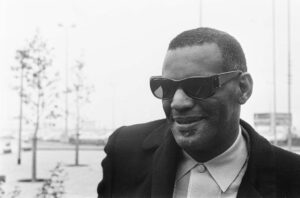
Ray’s return home is synonymous with that of a soldier coming back from battle. In 1977, while “shopping for a label, Ray spoke early on with Ahmet Ertegun and Jerry Wexler.”16 Ray had spoken with Ahmet Ertegun, Executive of Atlantic records, and decided it was time to come back, but he had stipulations. Ray had negotiated a “can’t-lose” situation for himself as he returned to Atlantic, he would own the master copy of any song he recorded, the band would be outfitted with new outfits, and Ray would get paid. “Ahmet found out that Ray had learned a lot in twenty years.”17
The true independence that Ray had been looking for when he spoke, people listened; when Ray played, people were in awe. If Ray said he would do something, Ray would get it done. There was no partnership. If Ray wanted to make a Jazz album, then he was going to make a Jazz album; and if Ray wanted to cover songs, then be ready to press record.
- Ray Charles and David Ritz, Brother Ray : Ray Charles’ Own Story (Cambridge, MA : Da Capo Press, 2004), 253, http://archive.org/details/brotherrayraycha00charl. ↵
- Ray Charles and David Ritz, Brother Ray : Ray Charles’ Own Story (Cambridge, MA : Da Capo Press, 2004), 254, http://archive.org/details/brotherrayraycha00charl. ↵
- Ray Charles and David Ritz, Brother Ray : Ray Charles’ Own Story (Cambridge, MA : Da Capo Press, 2004), 257, http://archive.org/details/brotherrayraycha00charl. ↵
- Michael Lydon, Ray Charles: Man and Music, Updated Commemorative Edition (Milton, UNITED KINGDOM: Taylor & Francis Group, 2004), 180, http://ebookcentral.proquest.com/lib/stmarytx-ebooks/detail.action?docID=183022. ↵
- Ray Charles and David Ritz, Brother Ray : Ray Charles’ Own Story (Cambridge, MA : Da Capo Press, 2004), 270, http://archive.org/details/brotherrayraycha00charl. ↵
- Michael Lydon, Ray Charles: Man and Music, Updated Commemorative Edition (Milton, UNITED KINGDOM: Taylor & Francis Group, 2004), 268, http://ebookcentral.proquest.com/lib/stmarytx-ebooks/detail.action?docID=183022. ↵
- Ray Charles and David Ritz, Brother Ray : Ray Charles’ Own Story (Cambridge, MA : Da Capo Press, 2004), 269, http://archive.org/details/brotherrayraycha00charl. ↵
- Ray Charles and David Ritz, Brother Ray : Ray Charles’ Own Story (Cambridge, MA : Da Capo Press, 2004), 272, http://archive.org/details/brotherrayraycha00charl. ↵
- Michael Lydon, Ray Charles: Man and Music, Updated Commemorative Edition (Milton, UNITED KINGDOM: Taylor & Francis Group, 2004), 298, http://ebookcentral.proquest.com/lib/stmarytx-ebooks/detail.action?docID=183022. ↵
- Michael Lydon, Ray Charles: Man and Music, Updated Commemorative Edition (Milton, UNITED KINGDOM: Taylor & Francis Group, 2004), 311, http://ebookcentral.proquest.com/lib/stmarytx-ebooks/detail.action?docID=183022. ↵
- Michael Lydon, Ray Charles: Man and Music, Updated Commemorative Edition (Milton, UNITED KINGDOM: Taylor & Francis Group, 2004), 283, http://ebookcentral.proquest.com/lib/stmarytx-ebooks/detail.action?docID=183022. ↵
- Michael Lydon, Ray Charles: Man and Music, Updated Commemorative Edition (Milton, UNITED KINGDOM: Taylor & Francis Group, 2004), 311, http://ebookcentral.proquest.com/lib/stmarytx-ebooks/detail.action?docID=183022. ↵
- Michael Lydon, Ray Charles: Man and Music, Updated Commemorative Edition (Milton, UNITED KINGDOM: Taylor & Francis Group, 2004), 312, http://ebookcentral.proquest.com/lib/stmarytx-ebooks/detail.action?docID=183022. ↵
- Michael Lydon, Ray Charles: Man and Music, Updated Commemorative Edition (Milton, UNITED KINGDOM: Taylor & Francis Group, 2004), 315, http://ebookcentral.proquest.com/lib/stmarytx-ebooks/detail.action?docID=183022. ↵
- Michael Lydon, Ray Charles: Man and Music, Updated Commemorative Edition (Milton, UNITED KINGDOM: Taylor & Francis Group, 2004), 320, http://ebookcentral.proquest.com/lib/stmarytx-ebooks/detail.action?docID=183022. ↵
- Michael Lydon, Ray Charles: Man and Music, Updated Commemorative Edition (Milton, UNITED KINGDOM: Taylor & Francis Group, 2004), 326, http://ebookcentral.proquest.com/lib/stmarytx-ebooks/detail.action?docID=183022. ↵
- Michael Lydon, Ray Charles: Man and Music, Updated Commemorative Edition (Milton, UNITED KINGDOM: Taylor & Francis Group, 2004), 327, http://ebookcentral.proquest.com/lib/stmarytx-ebooks/detail.action?docID=183022. ↵
Tags from the story
Nomination-Cultural-History
Nomination-Descriptive
Ray Charles
Recent Comments
Quinten Mero
Ray Charles is undoubtedly one of the best and most well-known Jazz artists of all time. The tale of Mr. Charles’ life is one of inspiration, and I say you’ve done a great job in your article to do such a story justice. It was interesting to learn about Mr. Charles’ arrest in Boston and the turnaround he had achieved after the incident. Well done!
24/04/2024
7:39 am
Austin Rolirad
Really cool, really interesting! I really liked the way you told this story, and I really enjoyed learning about Ray Charles. It’s nice to see that his story is still being recognized even today. All in all, your article’s really well done and I learned a lot from it, great work!
24/04/2024
7:39 am
jhollowell
I found this piece very interesting, as I love Jazz music and Ray Charles. I really enjoyed how the author touched on his motivation to not only continue his music career after all of the negative media surrounding his time in rehab, but how his mother always pushed him to “not be a cripple.” The way that his mother pushing him was what caused his rise to fame shows the importance of having someone in your life that pushes you to succeed, especially when you are at a low point in life.
26/04/2024
7:39 am
Jonathan Flores
As a current jazz musician here at St. Mary’s University, it is undeniable the effect and timeless nature of Ray Charles’ music that is still influential today. I really appreciated the deep dive you did on Ray Charles, a truly transformative musician, and think it is really important that we continue to tell the story of these important Black musician. Overall, the article was well done and I think you effectively educated people on a great musician.
22/04/2024
7:39 am